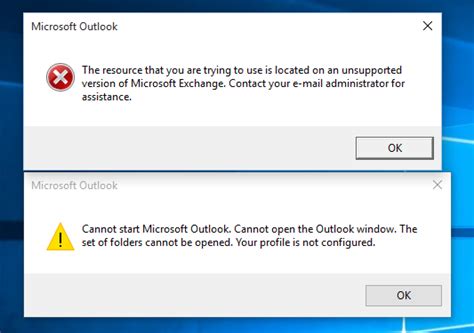Navigating the labyrinth of email applications can sometimes lead us to puzzling dead ends that are both infuriating and fascinating. One such instance is the mysterious error message from Outlook that states, ‘This message does not exist.’ Users have recounted various scenarios where this bizarre error appears, often leading to confusion and sometimes to a small triumph when employing clever workarounds. This situation is more than a software glitch; it serves as a lens to scrutinize the deeper issues of client-server communication and data consistency.
Commenters have reported a variety of reactions and fixes. For example, one user suggested that switching from Outlook to Thunderbird might solve the issue; they experienced a similar problem that resolved itself with this switch. This raises the question of how different email clients handle message synchronization and storage. Thunderbird, for instance, might employ a different caching mechanism that makes the message accessible even after it’s deleted from the server. This highlights how varied implementation strategies can yield significantly different user experiences.
The situation provokes reflections on the philosophical nature of messages and their existence. Several commenters invoked philosophical thought experiments and paradoxes to explain the phenomenon. One particular comment noted that the Outlook message existed in a transient state: its text was displayed on the client but was absent on the server. This can be likened to Schrödinger’s cat paradox, where the cat is both alive and dead until observed. Similarly, the message both exists and doesn’t exist depending on the perspective—the server’s or the client’s.
Further complicating matters are database transaction rollbacks, a typical issue in the realm of database management. A rollback is intended to revert the database to its previous state, but even this can fail, leaving the situation in a nebulous state. One insightful comment referenced a code snippet in Go’s database package:
func (tx *Tx) Rollback() error
which can return an error if the rollback itself fails. This adds another layer of complexity, as failed rollbacks can leave transactions in undecided states for extended periods, leading to resource locks and other unintended consequences.
The core issue boils down to synchronization problems between the client and server. In a distributed system, desync issues can create inconsistencies that are hard to reconcile. The Outlook error message serves as a stark reminder of this operational pitfall. When the server deletes an email but the client still retains a cached copy, the resulting error message leaves users in a state of limbo, unsure whether to trust that the message ever existed. This inefficiency in message handling and user communication speaks volumes about how email clients can improve their user experience by addressing these sync issues more gracefully.
Outlook’s design philosophy and development culture might also contribute to these issues. One commenter pointed out the ‘learned helplessness’ at Microsoft, encouraging a shift to Linux for a more transparent and flexible environment. This shifts the discussion from a technical problem to an organizational and cultural one. Microsoft’s Outlook teams could potentially benefit from adopting more open and robust mechanisms for error reporting and handling. This would not only improve user satisfaction but also align the application more closely with the needs and expectations of its user base.
In conclusion, this enigmatic message from Outlook serves as an interesting case study in how software design choices impact user experience and system consistency. It opens the door to broader discussions about client-server communications, error handling, and even philosophical musings on the nature of data existence. As technology continues to evolve, addressing these nuances will be crucial in developing more reliable and user-friendly applications.


Leave a Reply